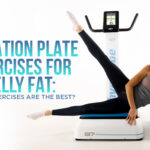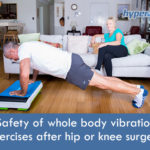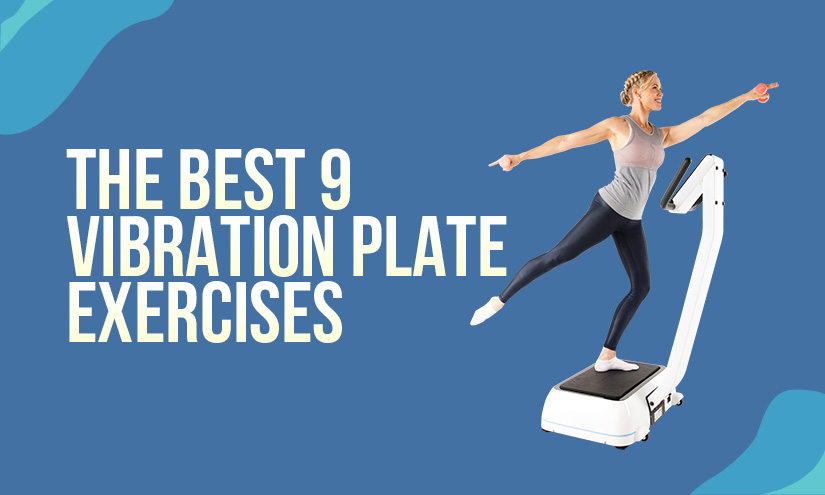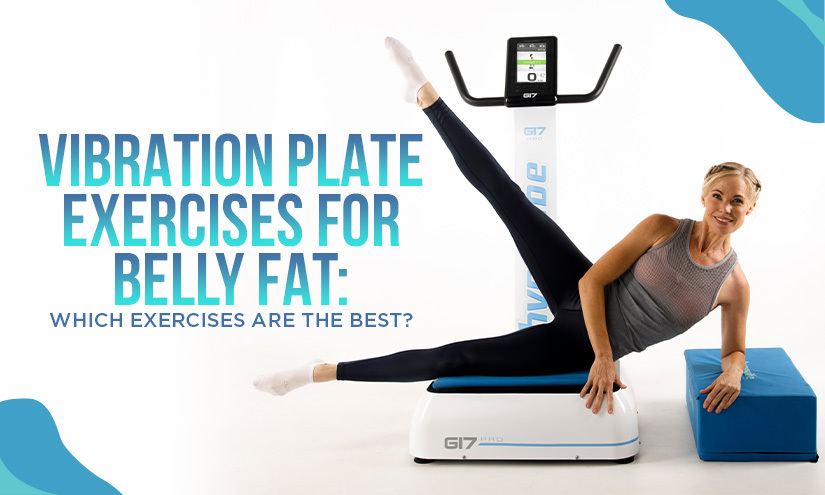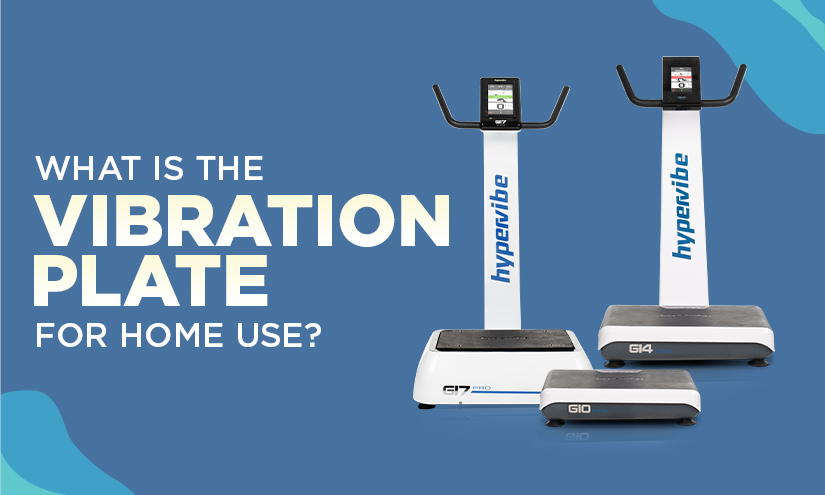How Many Calories Do You Burn on a Vibration Plate
If you keep hearing more about the vibration plate lately, there is a solid reason for that. The innovative fitness equipment has become a favourite subject of investigation in a number of scientific studies and the results have been quite astonishing. Stronger muscles, improved circulation, denser bones, faster physical recovery, and reduced body weight are just some of the numerous benefits offered by the machine.
Thanks to the high-frequency vibrations produced by the pate, our muscles are forced to work harder, our skeleton is encouraged to get stronger, and our fat tissue is left with no chance but to go away. 15 – 20 minutes a day, 3 – 4 days per week are more than enough for you to scoop out all the positive health outcomes, and to boast a leaner body.
And if you have asked yourself any of the following questions: “How often should I use the vibration plate?”, or “What is the number of the vibration plate calories burned on average?”, or “How many calories does a vibrating plate burn in 10 or 20 minutes”, then you have come across the right article. Let’s get shaking!
How often should you use a vibration plate?
Since its introduction for mass use following NASA’s initial application in the 1960s, the body vibration plate has been benefiting pretty much every area of our health. What is even more, in recent years the machine has been paving its way into the rehabilitation setting too, alleviating the symptoms of numerous medical conditions and chronic illnesses.
Due to its broad spectrum of potential benefits, the vibrating device has attracted the attention of many scientists. The research on the equipment has been growing steadily over the past couple of decades and the results appear to be pretty promising. So far the science is unanimous, proving the numerous applications of the machine, and revealing the recommended daily and weekly usage.
So, how often should you use a vibration plate? That depends on several important factors, such as your fitness or health goals, the type of vibrating equipment you are using, and the range of settings offered by the machine. Before you engage in regular whole-body vibration (WBV), the activity performed on the vibrating plate, you should go through the manual carefully and adhere to the health and safety policies.
As general guidance you can follow these tips:
- For best results, choose a machine that offers a pivotal type of movement (and not a lineal one);
- In terms of settings, the most favourable ranges have been established to be: 5 – 40 Hz (vibration frequency); 10 – 25 Gs (G-force acceleration); 2 – 8 mm (amplitude);
- The plate can be used all year, given you are training accordingly;
- In terms of daily usage you should not attempt to train for more than 30 minutes a day;
- When it comes to weekly usage, the ideal number of sessions has been shown to be in the range of 3 – 4 days a week;
- Always allow at least 48 hours between daily sessions, in order to give your body the needed rest for recovery.
Vibration plate calories burned on average
Similarly to the usage of the equipment, the total number of vibration plate calories burned during exercise depends on various factors. Among the most important ones is the type of the machine (pivotal or lineal), the settings (frequency, G-force, amplitude), the body position (standing, sitting, laying down), the duration of the activity (10, 15, 20 minutes, etc.), as well as your body weight, fitness level, and even age.
According to scientific research, the vibration plate calories burned on average is about one fifth (20%) more than those burned during conventional exercise. In other words, if you do squats on the ground and burn let’s say 100 cal in 20 minutes, you will burn around 120 cal performing squats on the vibrating plate for the same time period. Once again, this number will vary depending on the aforementioned factors.
Taking all of the above data into consideration, we can say that the average number of vibration plate calories burned during WBV is about 10 cal per minute. It is also important to mention that these calories would be burned even if you simply stand on the platform. That means you can increase the number of calories burned if you include various exercises in your training program, such as:
- Squats
- Push-ups
- Lunges
- Sit-ups
- Planks
How many calories does a vibration plate burn in 10 minutes?
Similarly to traditional physical activities, such as jogging, cycling, or swimming, whole-body vibration forces your muscles to work harder and burn more calories. The longer you exercise, the more calories you burn. However, during WBV you benefit from the extra high-frequency vibrating element, which adds additional calories burned per minute.
The higher the frequency, the bigger the number of calories burned. Scientists postulate that thanks to the accelerated mechanical oscillations delivered by the vibrating plate, your body experiences faster metabolism, greater oxygen flow, and more favourable circulation. This is why, when you exercise on a body vibration machine, you are able to achieve your desired fitness goals in a shorter time frame.
So, what is the number of vibration plate calories burned during a 10-minute exercise? Once again, the number will depend on a range of factors, but on average you can expect to burn the following amount of calories per 10 minutes:
- Just standing – 100 cal
- Aerobic exercises – 150 cal
- Jumping rope – 170 cal
- Squats – 130 cal
- Push-ups – 120 cal
How many calories does 20 minutes on a vibration plate burn?
By far, you have probably realised that you will not be likely to find WBV workouts in a vibration plate calories burned calculator. The main reason being is the complexity of the exercise and the numerous factors that are involved in the equation. Nevertheless, it is not impossible to average the different elements and come up with approximate results.
Knowing already what is the average calorie-burning rate during whole-body vibration, including the rate per 10 minutes on the plate, it is now time to gain an idea of the average calorie-burning rate per 20 minutes. As a basic guide, you can use the above-mentioned findings per minute and multiply by 20, so as to come up with the results, however, it is slightly more complex than that.
For example, in the first few minutes of the exercise, your heart rate will go higher, thus making your body burn more calories. As you progress with the exercise, your heart rate will start normalising, which will lead to a reduction in the calories burned per minute. The same is true for when you improve your fitness level over time, meaning the more physically fit you become, the fewer calories you will burn during physical activity.
The bottom line is that you are likely to burn slightly fewer calories between minutes 11 – 20 of the exercise, compared to the calories burned during minutes 1 – 10. To make it simpler, you can deduct 10% of the calories burned during a 10-minute WBV session, in order to find the calories burned during a 20 minutes session [(10 mins x 2) – 10%], or:
- Just standing – 180 cal
- Aerobic exercises – 270 cal
- Jumping rope – 306 cal
- Squats – 234 cal
- Push-ups – 216 cal
Conclusion
Whole-body vibration offers a low-impact, safe, and highly convenient way to exercise. The activity has been proven beneficial in almost every area of human health, including for rehabilitation purposes. 15 – 20 minutes per day, 3 – 4 days per week are more than enough to get all the benefits.
On average, you can expect to burn around 10 calories per minute spent on the platform, but once again this is heavily dependent on a number of factors. The most important is for you to train adequately, adhere to the safety manual, and be consistent, and you will soon start noting the positive difference.
References (in order of appearance)
Park, S. Y., Son, W. M., & Kwon, O. S. (2015). Effects of whole body vibration training on body composition, skeletal muscle strength, and cardiovascular health. Journal of exercise rehabilitation, 11(6), 289–295.
Milanese, C., Cavedon, V., Sandri, M., Tam, E., Piscitelli, F., Boschi, F., & Zancanaro, C. (2018). Metabolic effect of bodyweight whole-body vibration in a 20-min exercise session: A crossover study using verified vibration stimulus. PloS one, 13(1), e0192046.
Games, K. E., Sefton, J. M., & Wilson, A. E. (2015). Whole-body vibration and blood flow and muscle oxygenation: a meta-analysis. Journal of athletic training, 50(5), 542–549.

